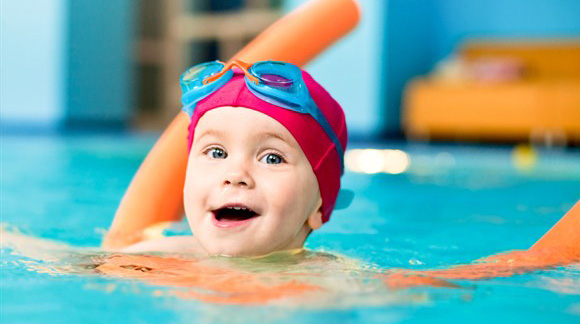
Now that summer is here, swimming is at the top of the long list of fun activities to do. Whether the kids are compelled to learn or are just out to enjoy the water, one thing is for sure — parents need to keep a close eye on them.
According to the National Safety Council:
More than one in five drowning victims are children 14-years-old and younger, and most incidents happen when a child falls into a pool or is left alone in the bathtub.
One important information that you should know, according to an article on slate.com, is this:
Drowning is not the violent, splashing call for help that most people expect.
That sounds really scary because drowning can actually happen very, very quietly. The article above also states that:
Drowning is almost always a deceptively quiet event. The waving, splashing, and yelling that dramatic conditioning (television) prepares us to look for is rarely seen in real life.
Summer is supposed to be a fun time. No parent would ever want any kind of accident to happen. With swimming as one of the top favorite activities during the summer season, parents have to be more aware of the silent signs of drowning.
There are 8 deadly signs every parent or guardian should look out for each time the kids are in the pool.
Here are the 8 silent signs of drowning to look out for.
1. They can’t call for help — she has to be able to breathe before she can speak. When a person is drowning, her mouth sinks below and reappears above the surface of the water. There isn’t time for her to exhale, inhale, and call out.
2. They can’t wave for help either. A drowning person instinctively extends her arms to the sides and presses down to lift her mouth out of the water; a child may extend her arms forward. She can’t use her arms to move toward a rescuer or reach for rescue equipment.
3. They remain upright in the water, with no evidence of kicking. She can struggle for only 20 to 60 seconds before going under.
4. Their eyes are glassy, unable to focus, or closed.
5. Their face may be hard to see; hair may be over forehead or eyes.
6. Their head is low in the water, with mouth at water level; head may be tilted back with mouth open. A child’s head may fall forward.
7. They are quiet. Children playing in the water make noise. When they get quiet, you need to get to them and find out why.
8. They don’t seem in distress. Sometimes the most important indicator that someone is drowning is that she doesn’t look like she’s drowning. She may just seem to be looking up at the sky, shore, pool deck, or dock. Ask her, “Are you all right?” If she can answer at all, she probably is. If she returns a blank stare, you may have less than 30 seconds to get to her.
Everybody should be aware of all the silent signs of drowning. This just means that every parent should take extra care of their kids each and every time they’re in the pool.
There really is no room for complacency whenever the kids are in the water because drowning can happen very quietly. To emphasize this, slate.com has this to add:
Drowning doesn’t look like drowning.
Who would have thought that immediate silence in the pool area could be a deadly sign of drowning?
Nonetheless, it’s a very crucial sign to look out for considering the fact that it’s pretty hard to decipher if a child is really drowning or not.
Parents and guardians should do more than just watch their kids in the water. They should always keep in mind the silent signs of drowning. It’s the best way to avoid any kind of tragedy in the water.
The 8 silent signs of drowning were quoted from an article on rd.com. For more information about silent drowning, parents are encouraged to read the whole article here.
Have a safe and fun summer! Let’s keep our children safe this summer and spread the word.
Are there any more silent signs of drowning you are aware of?









